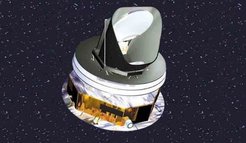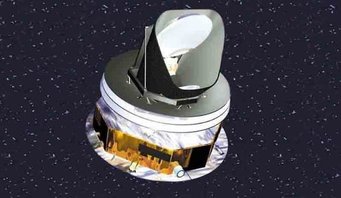The Planck Mission
The new data from Planck are based on the first 15.5 months of its all-sky surveys, about half of the data expected from the mission overall. Launched in 2009, Planck was designed to map the sky in nine frequencies using two state-of-the-art instruments: the Low Frequency Instrument (LFI), which includes the frequency bands 30–70 GHz, and the High Frequency Instrument (HFI), which includes the frequency bands 100–857 GHz. HFI completed its survey in January 2012, while LFI continues to operate.

Planck’s first all-sky image was released in 2010 and the first scientific data were released in 2011. Since then, scientists have been extracting the foreground emissions that lie between us and the Universe’s first light to reveal the CMB presented in this release. The next set of cosmology data will be released in early 2014.
The Planck Scientific Collaboration consists of all the scientists who have contributed to the development of the Planck mission, and who participate in the scientific exploitation of the Planck data during the proprietary period. These scientists are members of one or more of four consortia: the LFI Consortium, the HFI Consortium, the DK-Planck Consortium, and ESA's Planck Science Office. The two European-led Planck Data Processing Centres are located in Paris, France and Trieste, Italy.
German participation in the Planck mission is based at the Max Planck Institute for Astrophysics (MPA), as Rashid Sunyaev and Simon White are the German co-Investigators in the two instrument consortia. It is funded by the German national aeronautics and space research centre DLR and the Max Planck Society (MPG). MPA and MPG support the scientific participation in the mission, DLR the majority of the technical contribution, especially the MPA Planck Analysis Centre (MPAC).
The MPAC is responsible for providing data analysis infrastructure for data centres and for the individual Planck scientists. Within the IDIS data system of Planck (Integrated Data and Information System), the MPAC is responsible for both the provision of a workflow engine and a data management component and also has to provide development, integration and operation of the data simulation pipeline.
